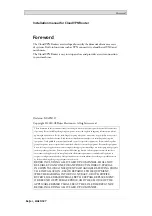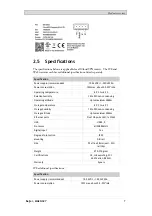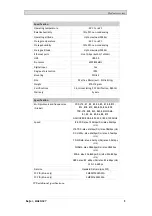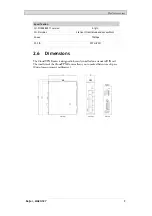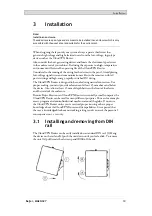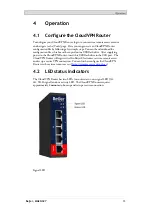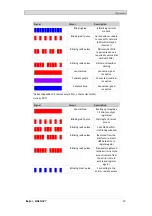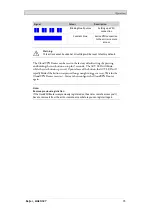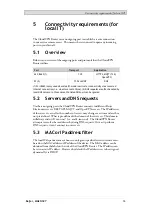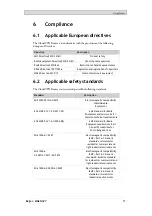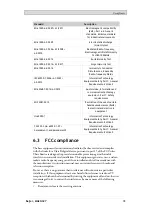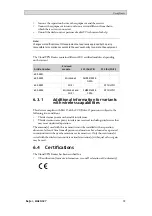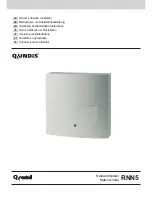
Connectivity requirements (for local IT)
5
Connectivity requirements (for
local IT)
The CloudVPN Router uses an outgoing port to establish a secure connection
to our remote access. This means there is no need to open any incoming
ports in your firewall.
5.1 Overview
Below is an overview of the outgoing ports and protocols that the CloudVPN
Router utilizes.
Port
Transport
Application
443, 8443(1)
TCP
HTTPS, MQTT (TLS),
OpenVPN
53(2)
TCP and UDP
DNS
(1) Port 8443 is only used when stealth mode is active for connectivity via a censored
internet connection (i.e. when located in China).(2) DNS requests are often handled by
local DNS servers. In those cases, the listed DNS port can be ignored.
5.2 Servers and DNS requests
Via these outgoing ports the CloudVPN Router connects to different Beijer
Electronics servers: REST API, MQTT, and OpenVPN servers. The IP addresses
of these servers, as well as the number of servers, may change over time and are thus
not pre-defined. What is pre-defined is the domain of these servers. This domain
will always end with ".ixon.net" (i.e. am01.ixon.net). The CloudVPN Router
attempts to resolve these addresses by doing DNS requests. If it can't perform
DNS requests, it can't connect to our servers.
5.3 MAC or IP address filter
The local IT department may choose to only grant specific devices internet access,
based on the MAC address or IP address of the device. The MAC address can be
obtained from the label on the side of the CloudVPN Router. The IP address can
be set to a static IP address. However, by default the IP address is set to be assigned
dynamically via DHCP.
Beijer, MAEN327
16

